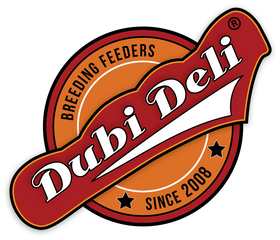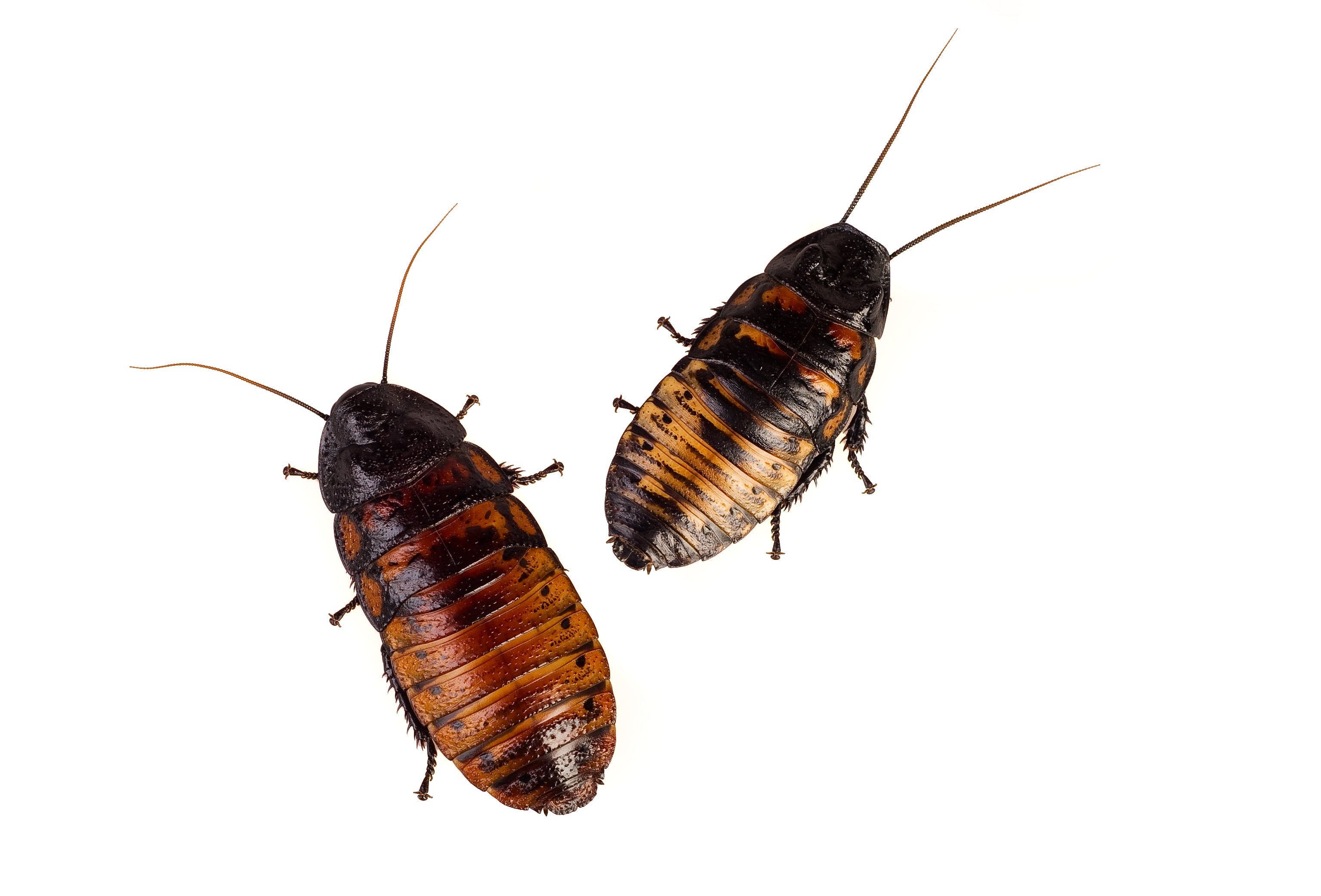The hissing cockroach is one of the largest cockroaches in the world. This insect is native to tropical and sub-tropical climates, but it can be kept as feeders or even pets in many parts of the world.
As its name implies, the hissing cockroach produces a sound created by air passing through its respiratory system. But what do cockroaches eat?
Hissing cockroaches are omnivorous, which means they'll pretty much eat anything. They're not as picky as some roach species. They're not the prettiest creatures around, but they sure are interesting!
So what do hissing cockroaches eat, and how can you ensure they grow up as healthy as possible? Keep reading to learn more about the diet of these fascinating creatures!
What Is a Hissing Cockroach?
The hissing cockroach (Gromphadorhina portentosa) is a large, flightless insect native to Madagascar. It's one of the few species of cockroaches that produce sound - and its signature hiss is iconic.
Do They Really Hiss?
These bugs get their name from the loud 'hiss' they use as a defense mechanism, created by releasing air from two breathing holes on each side of their body.
This defensive scream serves as an alarm signal. When hissing cockroaches feel threatened or stressed, they spread their wings and rear up before pushing air out.
An Ancient Species
Hissing roaches have broad bodies and long legs made for digging; some specimens may even reach 2 inches in length! They are dark brown with occasional patterns or stripes around their pronotum (upper back).
Apart from communication, this bug also makes noise when attacking food sources or mates. In fact, males are often quite aggressive during mating season, so it's important to keep them away from other pets in your home!
Hissing roaches may seem intimidating by name alone. But don't let that put you off. These fascinating creatures can make great low-maintenance feeder insects. There's nothing like seeing these ancient insects scuttling around in person.
What Do Hissing Cockroaches Eat in the Wild
Hissing cockroaches are fascinating creatures found in many parts of the world. In the wild, a hissing cockroach diet consists of a wide range of food, including decaying plants, algae, fungi, and other insects.
When available, they scavenge for dead animals and even eat their shed exoskeletons. Both provide them with a source of protein and essential minerals.
Hissing cockroaches have a "sweet tooth." They love sweet fruits like dates or raisins like human beings do! Some hissing cockroaches even rub themselves against fruit trees to draw sap into their mouths. They use special tentacle-like appendages at the base of their antennae.
Whatever food they don't eat, they store inside tiny hiding places in their burrows. They make sure they have enough food reserves during times when natural resources may be scarce.
These creatures have a very long digestive tract. It allows them to digest whatever is available to them without having any particular preference for specific types of food. That makes them quite adaptable omnivores!
What to Feed Your Hissing Cockroach
When it comes to feeding your hissing cockroach, you'll want to provide them with the proper nutrients their bodies need to stay healthy.
As omnivores, hissing cockroaches enjoy a wide variety of foods from both the plant and animal kingdoms. A good staple for your cockroach should include a combination of fresh fruits and vegetables.
Fruits
Hissing cockroaches love to eat fruit! Here are a few examples of fruits they may enjoy:
- Apples
- Bananas
- Beets
- Blueberries
- Citrus Fruit
Fresh fruit can go bad faster than other foods in the hissing cockroach's warm enclosure. Only offer what the roaches can consume in a day, and remove what's left over to prevent spoilage.
Vegetables
Vegetables fare better in terms of longevity. While fruit may get moldy, vegetables tend to crisp up a bit when they dry out, making them safer to leave in the enclosure.
Here are some vegetables your hissing cockroach may appreciate:
- Carrots
- Avocado
- Romaine Lettuce
- Alfalfa Sprouts
- Kale
- Cabbage
- Potatoes
Proteins
Hissing cockroaches are omnivores, which means they need a healthy amount of proteins in their diet. They can safely snack on high-protein items like bug paste, dog kibble, or cat kibble.
You can even feed them pinkies (baby mice) or fish. These are excellent protein sources, especially if you're using them as feeders for reptiles.
Feeding every couple of days should be enough for adequate sustenance. Try providing different foods at each mealtime for variety. But remember, overfeeding may lead to obesity (yes – even cockroaches can get overweight!).
Water
Last but not least, remember to provide water! They can get a lot of hydration from the fruits in their diet, but it's still best to ensure they have water access if needed.
Don't give them a bowl of water. It's very easy for hissing cockroaches to drown. You're better off offering hydration from a misting spray, gels, or water crystals.
Hissing cockroaches are adept at locating tiny water droplets, even when there isn't an obvious source.
Young roaches need more water than adults. For the best health and nutrition until adulthood, young roaches should always have access to fresh drinking water. Change their water daily to prevent illnesses.
You can give them daily mistings from a spray bottle. Or you can place small plastic dishes containing gel balls in the enclosure.
Hissing Cockroach Care
Hissing cockroaches are both fascinating and long-lived. So if you have one in your care, here is our hissing cockroach guide to keeping them happy and healthy!
Enclosure Size
First, it's important to remember that these insects need space - they like moving around with lots of room to explore. Enclosures should be 3-5 times the length and width of your roach.
If you have a group, a ten-gallon enclosure is an ideal size. Additionally, provide plenty of hiding places such as rocks or cork bark.
Temperature
A temperature between 72-76 degrees Fahrenheit is ideal for their health. Too hot or cold temperatures can impair their development and make them more susceptible to illnesses.
Humidity
Low humidity can also cause problems for your roaches. You can make sure there's enough moisture in the air by using a misting bottle or by placing a moist paper towel over part of the enclosure.
Cleaning
Regular cleaning sessions will help maintain health. Remove any rotted food leftovers after meals while replacing substrate when necessary (about once per month).
Hissing Cockroach Tips: Common Mistakes to Avoid
If you have a hissing cockroach, it's essential to be aware of what not to do. Here are some common mistakes that you should avoid:
Research Your Cockroach Species
Don't assume that all cockroaches are the same! It's important to know what species of cockroach you're working with if you want them to be healthy. Please familiarize yourself with its habits and environmental requirements.
Improper Food Choices
We know they're a cockroach, and they'll eat anything. But that doesn't mean they should. Avoid sugary foods, processed foods, and high-fat items.
Irregular Feeding
Make sure they have access to food every couple of days. And remember to give them water every day.
Provide Ample Airflow While Keeping Humidity Levels Stable
Because they come from humid environments, you mustn't let the enclosure become either too moist or dry. This will give them room to breathe while also giving them enough moisture.
It helps keep their exterior from drying out too quickly, which would otherwise lead to health problems.
To help ensure proper humidity levels, keep an eye on wet spots in their environment and use a hygrometer. Both will throw off warnings when one needs adjustment.
Stick With Consistent Temperature Ranges
Cockroaches need stable temperatures around 75°F – 85°F depending on species, especially during molting.
Any changes during molting could be detrimental to successful shedding. Injury can occur from pockets of air trapped beneath an old exoskeleton. Such sudden changes could even kill them outright at times!
Don't Skip Regular Cleaning
Cleaning your cockroaches' enclosure on a regular basis is key to keeping them happy and healthy. Remove uneaten food and fecal matter every few days, as it can cause bacteria build-up.
Ignoring these things can lead to poor health conditions in your cockroach if not addressed quickly enough.
Provide Supplemental Light - But Not Too Much
Contrary to popular belief, cockroaches do indeed need some light source.
Keep lighting at 12–14 hours per day and use full spectrum bulbs designed for insects. These bulbs contain UV-A & UV-B radiation necessary for vitamin D production. And that leads to happier, healthier little roach lives.
Cockroach Care Made Simple
Caring for hissing cockroaches can be a rewarding experience if done correctly. With the right environment, diet, and routine maintenance, you'll have yourself a well-adjusted little friend in no time!
At Dubi Deli, you can buy hissing cockroaches of various ages and sizes. Check out our current selection of hissing cockroaches and order yours today.
Remember "what do hissing cockroaches eat," and consistently feed them fresh food. A balanced diet, comfortable enclosure, and regular cleaning sessions will help keep them healthy! Happy roach-keeping!

